Turkmen Food
Turkmen Cuisine
Turkmenistan cuisine reflects in its people that has a blend of its nomadic past, ethnic Turkmen majority, and Uzbek, Russian and Tajik minorities. Turkmen cuisine is piled high with meat, rice, sour milk products, cereals, vegetables, cheeses and butter made from camel’s milk. A distinctive feature of Turkmen cooking is preserving the original flavors of the ingredients and not covering them with intense herbs and spices.
A meat-lovers paradise, dishes include lamb, chicken, hares, gazelle, deer, camel, a medium-sized game bird called ptarmigans, and other wild birds. The consumption of horsemeat is prohibited, as horses are considered sacred animals since ancient times. (The Akhal-Teke, a breed famous for its stunning coat with a metallic look, is the national emblem of Turkmenistan.)
Turkmen cuisine is known for its hearty meat dishes, breads, and soups, as well as its sweet and spicy seasonings. The use of tea is also a ubiquitous aspect of Turkmen culture, and it is often served as a sign of hospitality. Hospitality is a key aspect of Turkmen culture, and guests are treated with great respect and generosity. It is customary to offer tea, sweets, and other treats to guests, and to provide them with a comfortable place to stay.
Turkmen cuisine is not only about food; it embodies the traditions and hospitality of the Turkmen people. Meals are often communal, bringing families and friends together to share and enjoy dishes. Special occasions, weddings, and festivals often feature elaborate feasts that showcase the country’s culinary heritage. Turkmen national cuisine is a vibrant reflection of the country’s culture and history, offering a delightful experience for those who wish to explore its rich flavors and traditions. Whether enjoyed in a family home or at a bustling market, Turkmen cuisine provides a unique and memorable gastronomic adventure.
Dograma
Dograma is the most traditional Turkmen dish that is only found in Turkmenistan. This dish is reserved for special occasions. The name of the dish originates from the word “dogramak” which means to cut to pieces and refers to the making of dograma. It begins with baking multiple flatbreads in a tandyr (clay oven) and boiling fresh mutton in a large pot until the meat is tender enough to fall off the bones. The bread is then torn into small pieces – a task that usually involves the entire family – and mixed with slices of onion and shredded meat. Eventually, dograma is dipped into a bowl and covered with hot broth for each guest to enjoy.
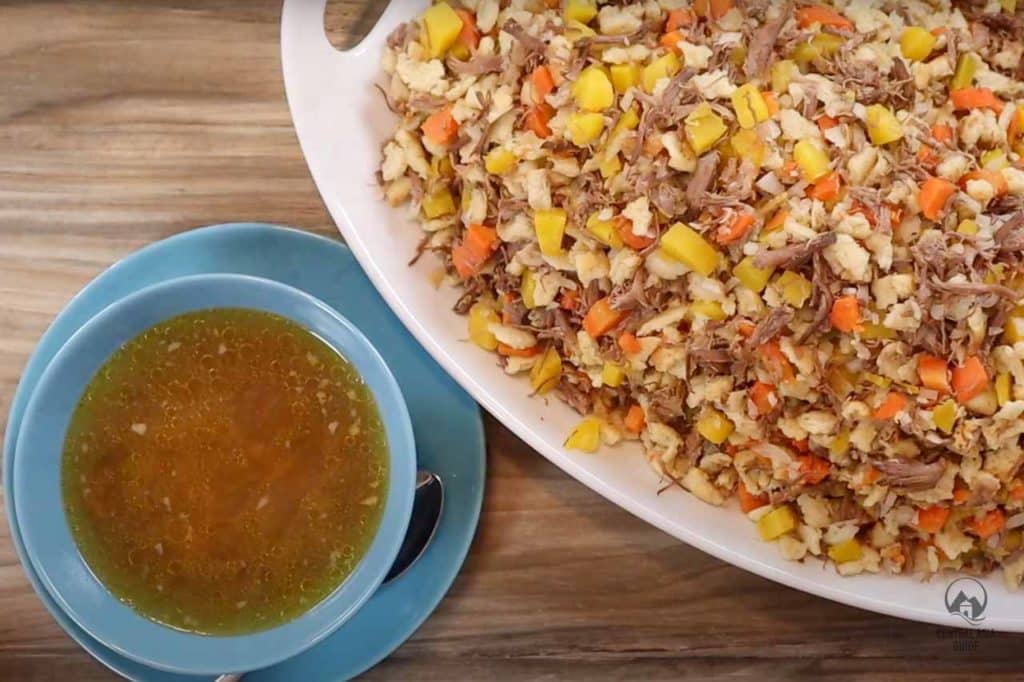
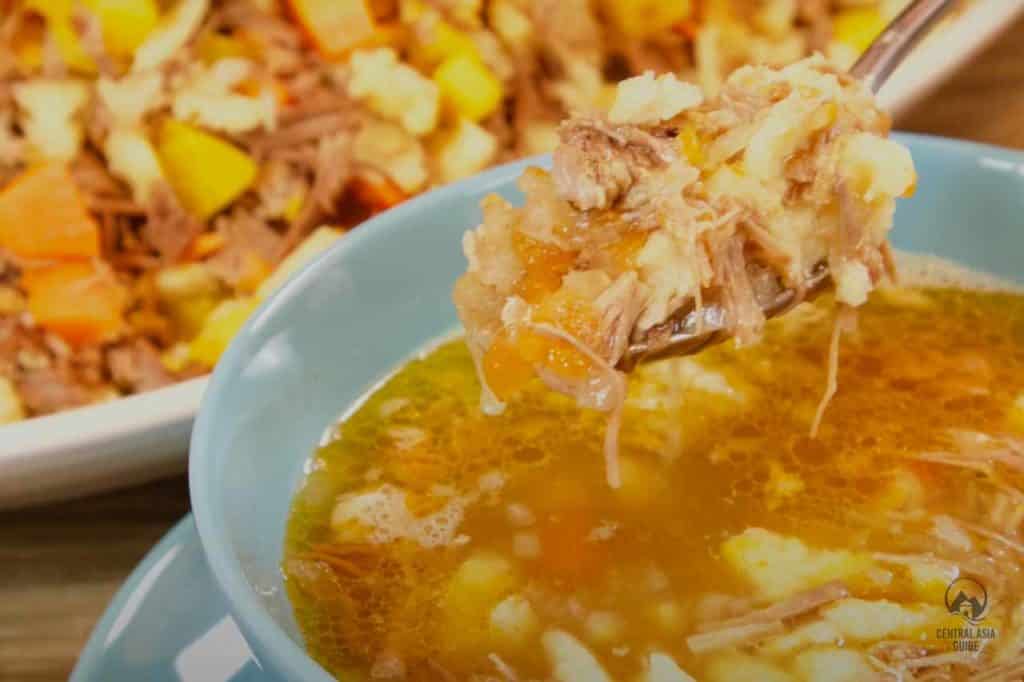
Plov (Pilaf)
Plov is the quintessential Turkmen dish, often considered the national dish. It consists of rice cooked with meat (usually lamb or beef), carrots, onions, and a blend of spices. Plov is typically served at special occasions and celebrations.
Turkmen pilaf, or plov, distinguishes itself from similar dishes in neighboring countries through unique ingredients, preparation methods, and cultural significance. Typically made with long-grain rice like *Basmati* or *Jasmine*, Turkmen plov uses lamb or beef and features an abundance of sautéed onions and carrots, which lend a sweeter taste compared to the stickier rice often found in Uzbek plov.

The cooking technique involves using a *kazan* (a deep cast-iron pot) over an open flame, with the rice layered on top of the meat and vegetables to absorb rich flavors, while Uzbek styles may mix the rice and meat more thoroughly. Served on a large platter with the rice heaped in the center, Turkmen plov is often accompanied by pickles, salad, or yogurt, emphasizing a balance of flavors and promoting communal sharing. This dish holds special significance in Turkmen culture, often featured at weddings and celebrations, and may include saffron for added flavor and color. Overall, the distinctive ingredients, cooking techniques, and cultural context of Turkmen plov reflect the rich culinary heritage of Turkmenistan, setting it apart from pilaf variations in surrounding regions.
Dushbara
In contrast, pelmeni are a type of dumpling that originated in Russia and are popular across various countries in Eastern Europe and Central Asia. While pelmeni are also filled with minced meat, they often include a mixture of pork, beef, or chicken. The dough for pelmeni is slightly thicker than that used for dushbara, and the dumplings are usually rounded rather than pinched. Pelmeni are often served with sour cream or butter, and they can be boiled, fried, or baked.
While both dushbara and pelmeni share similarities as dumplings, their distinct fillings, preparation methods, and cultural contexts set them apart, highlighting the rich diversity of culinary traditions in the region.
Kebabs
Turkmen kebabs are a quintessential element of Turkmen cuisine, showcasing the nation’s rich culinary traditions and a deep-rooted passion for grilling. Typically made from marinated lamb, beef, or chicken, these kebabs are skewered and grilled over an open flame or hot coals, imparting a distinctive smoky flavor that is characteristic of traditional Turkmen barbecue. While lamb is the most popular choice, variations with beef and chicken are also common, emphasizing the quality and tenderness of the meat used.
Kebabs hold a significant cultural role in Turkmenistan, often featured at celebrations, family gatherings, and festivals, symbolizing hospitality and community spirit. Available as street food from outdoor grills or market stalls, they can also be enjoyed in restaurants and cafes, making them accessible to both locals and tourists. With regional variations such as shashlik (meat skewers) and kebabs that incorporate vegetables, Turkmen kebabs not only reflect local culinary preferences but also invite everyone to experience the warmth and richness of Turkmen culture.
Bread snacks
Pishme
Pishme is little fried pieces of dough made for special events. They’re also served as appetizers and offered to the guests as a welcoming gesture. It is a prototype of other Central Asian boorsok /baaursak. Pishme is a traditional Turkmen snack that is served with green tea during celebrations, especially weddings, and other celebrations.
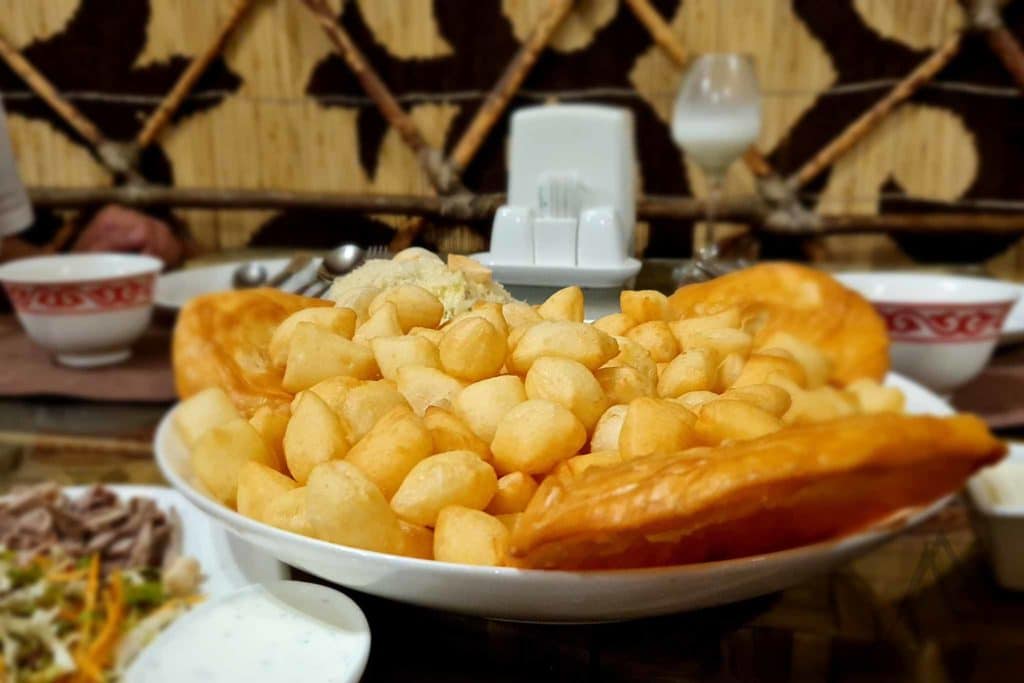
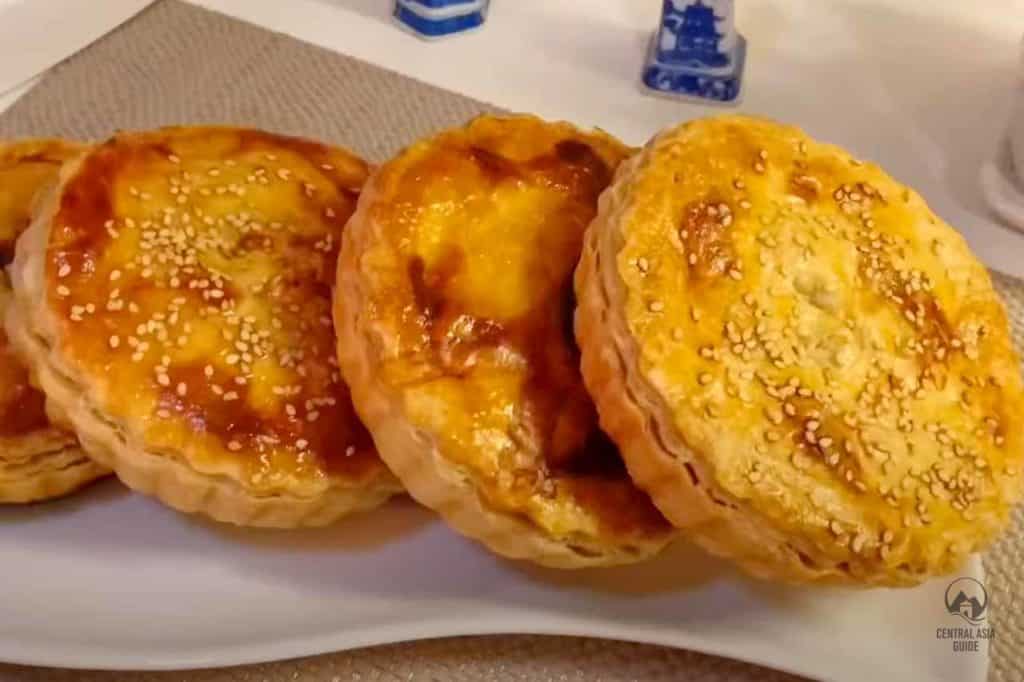
Fitchi (Meat Pies)
These meat pies are originally a take on the Turkmen traditional dish Ishlekli (Işlekli), meat pie cooked in the heat of the sand or clay oven but today the adapted version can be cooked in a regular oven.
Camel Milk
Turkmens have a strong and long traveling nomadic clan of Central Asia and the custodian of the precious sheep, goat, cattle, and camel genetic resources. A major part of the community is settled in the towns however, a fairly large portion of the population still loves livestock keeping in nomadic style. Those people are still practicing camel nomadism for ages and owning a very famous and good milking came breed.
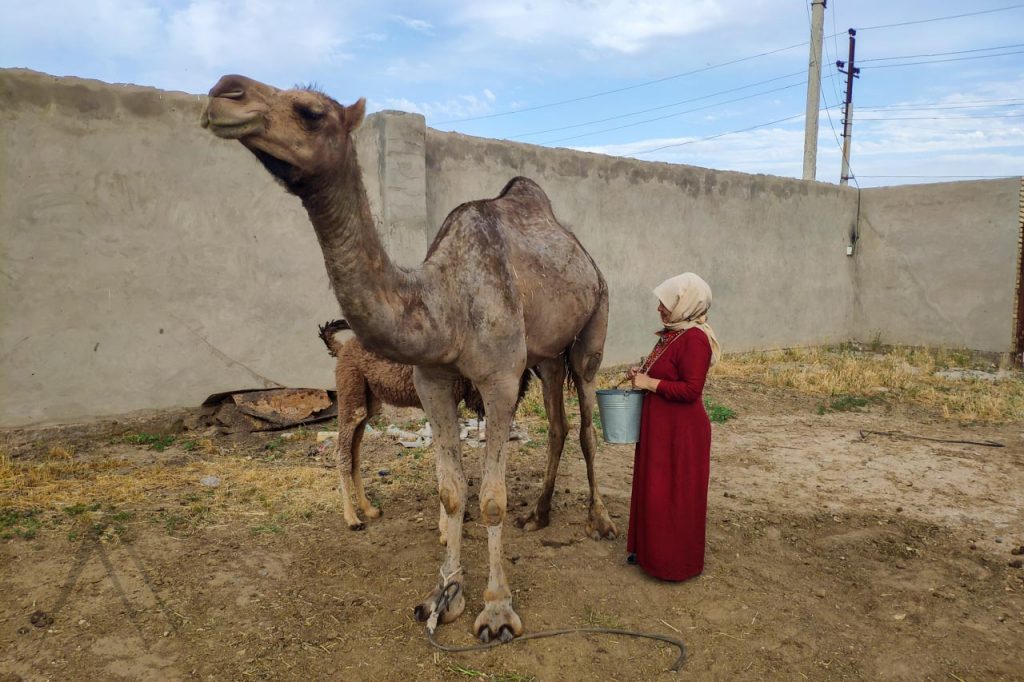
Chal (fermented camel's milk)
Chal, is the fermented camel milk traditionally prepared by Turkmen nomads. Chal in Turkmenistan, in Kazakhstan known as “Shubat” fermented camel milk flashing white with a sour flavor. “Chal” is normally prepared by first souring camel milk in a skin bag or ceramic jar by adding previously soured milk.
For 3–4 days, fresh milk is mixed in, and the matured “chal” will consist of one-third to one-fifth of previously soured milk. Camel milk will not sour for up to 72 hours at temperatures below 10 °C (50 °F). At 30 °C (86 °F) the milk sours for approximately 8 hours (compared to cow’s milk, which sours within 3 hours).
Best destinations to enjoy Turkmen Cuisine
Page updated 26.2.2023